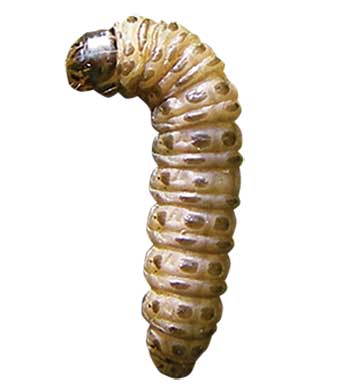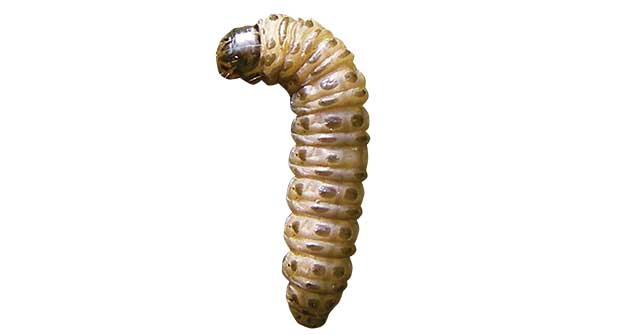
Tethered, chewed-up grass that’s brownish/gray in color is a telltale sign that a client’s yard has been infested with sod webworms, according to David Furr, owner of Turf Medic Lawn Service.
“You get down in the thatch, and you can see the tiny worms,” says Furr, whose Myrtle Beach, S.C.-based company provides lawn care services to about 900 residential customers. “There will be a lot of green little balls where they chewed the grass up. They’re hard to see unless you pull back the thatch.”
Sod webworm larvae are about 1 to 13 millimeters long and can be green, beige, brown or gray. When they become adults, they turn into brownish-gray moths.
“The first thing people are going to see is the moths hovering above the grass, as that’s when they lay their egg,” says Furr, adding that the moth’s ability to fly expedites the pests’ spread.
In his region, Furr typically sees symptoms appear in August or September, when nighttime temperatures start to cool down to about 70 degrees F. Sod webworms are most prevalent in St. Augustinegrass but can also be found in centipedegrass and zoysiagrass.
“A lot of times that’s because people with St. Augustinegrass may have shady lawns with a lot of trees around, and that’s a good place for the sod webworms to camp out,” he says.
To help prevent sod webworms from taking hold, Furr’s company applies an insecticide with the active ingredient of chlorantraniliprole along with a fertilizer.
He says it’s crucial to perform regular maintenance and manage the thatch level by bagging grass clippings. He adds stress from drought or disease can worsen the symptoms.


